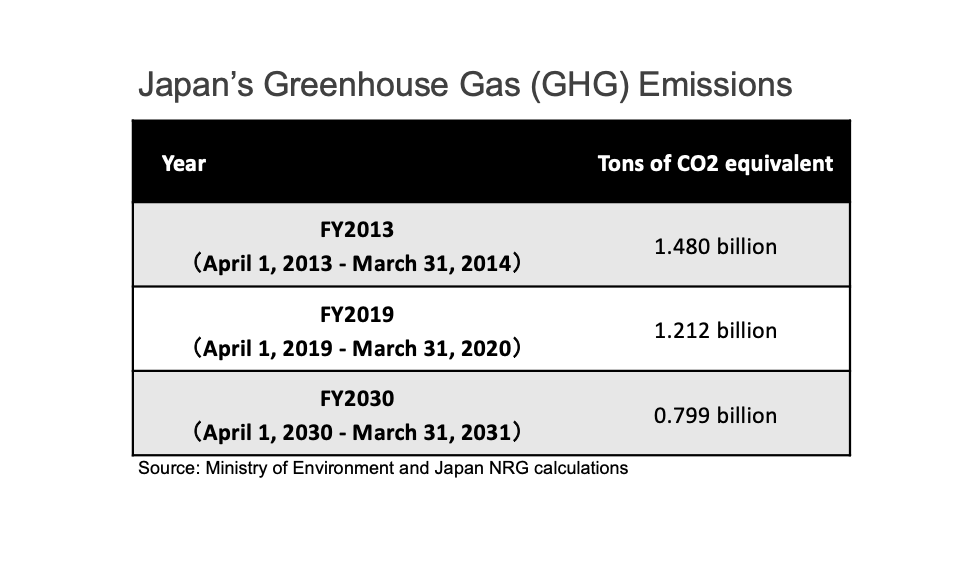Last month, Prime Minister Suga declared a 46% reduction in greenhouse gas (GHG) emissions by FY2030 compared to FY2013 levels. Japan NRG takes a look at what this means in practice.
According to PM Suga’s declaration, within nine years Japan needs to reduce greenhouse gas (GHG) emissions to about 800 million tons of CO2 equivalent. In FY2019, which ended March 31, 2020, Japan had annual emissions of 1.21 billion tons of CO2 equivalent. So, the country needs to cut emissions by 34% from current levels.
To achieve this, Japan needs to drastically restructure its energy sector, which emits 85% of total greenhouse gases (including methane and CFCs, etc.) and 93% of CO2. However, this can’t be done simply by shuttering coal plants and building more solar and wind farms. “Energy conversion” (which includes electricity generation and oil refining) accounted for only 433 million tons, or around 35.7% of Japan’s total emissions in FY2019.
Manufacturing contributed a further 279 million tons (23%), while transport emitted 199 million tons. Incidentally, transport’s CO2 footprint is almost unchanged since 1990. This is surprising since the current number of registered two and four-wheel vehicles totals 82.5 million units, compared to 58 million units three decades ago.
Unless Japan eliminates the entire CO2 output of its energy sector in nine years, which is impossible, it will have to use other means to meet the FY2030 numbers. We outline a few of those paths, as well as areas of potential reductions within the energy sector.

